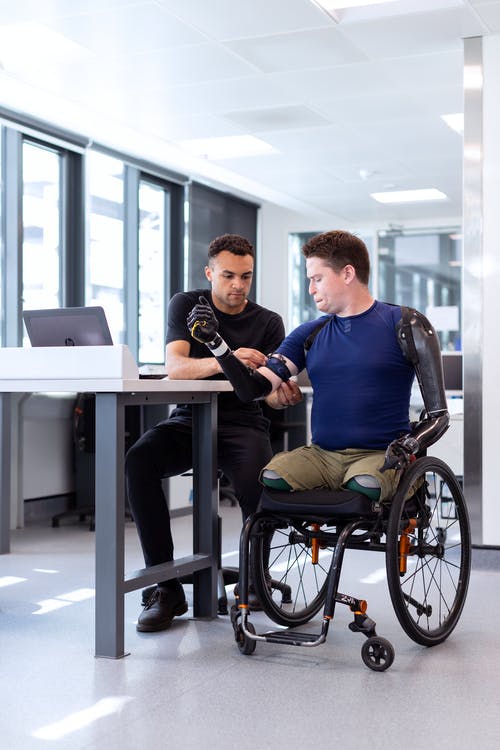
Physical Activity for Disabled People
- by Jonathan Wood
- Posted on April 6, 2022
It is important to inform disabled people about the benefits of physical activity. This can be done by educating them about the benefits, limitations, and obstacles of physical activity. Encourage them to find a program that suits them. You don’t have to exercise as hard as running a marathon or going to the gym. Chair-based exercises can have just as great an effect on general health and well-being as an extensive workout in the gym. They are a great way of making new friends and discovering the many benefits associated with physical activity.
Evidence
As with all people, home care services melbourne activity is vital for the well-being of those with various impairments. There is little evidence to support the benefits of exercise. Most research on the subject focuses on lower body activities, which are often low-intensity exercises to improve muscle strength and function. Evidence is also lacking for upper-body-led exercise, which could potentially be more beneficial for individuals with a range of impairments.
This rapid evidence review sought to identify the most recent findings regarding the effects of physical exercise on the health and well-being of young disabled people. The WHO physical activity guidelines are cited in numerous reviews and articles that were hand-searched by the authors to find relevant articles. These studies were published between 1 January 2007 and 9 April 2021. The findings support the current guidelines’ effectiveness in improving the health and well-being of people with disabilities.

Barriers
Unsafe conditions and disability services melbourne places are two of the most frequent barriers that people with disabilities face. But there are other barriers. Community barriers, such as speeding cars and excessive crime, can also be a barrier to physical activity. Two of the biggest barriers to people with disabilities are inaccessible buildings and transportation to gyms. Despite these barriers, physical activity rates don’t generally drop after improvements are made in the environment.
The authors conducted qualitative interviews with individuals with disabilities, family members, and paid care providers to identify common barriers and facilitators. Although the study is focused on individuals with disabilities it also examines barriers to physical activity for children without disabilities. Disabled children often have less financial resources, and may require one-on-1 attention from caregivers. Accessibility for people with disabilities can be increased by providing flexible payment schemes, subsidised programs, and modified equipment.
Exercises
Below are ten great activities for people with disabilities. Adapt these exercises to suit your needs and abilities. These exercises can help you stay active and in shape, regardless of your limitations. These exercises can be done in a wheelchair or on the ground. You can also find videos that show exercises for wheelchair users. These videos can also be customized to suit your lifestyle and abilities.
For people with limited mobility, chair-marching is a great exercise. To push the chair forward, you must sit in a chair and imitate a soldier’s gesture. You may not be able control your legs so you can use your arms and push the chair forward and backward. You can also perform the same exercise using your hands. This exercise will improve your endurance and strength. This exercise is also a good way to improve posture.
Intensity scale
Intensity measures for physically disabled individuals can be useful in monitoring the intensity and duration of physical activity. Intensity-based measures, such as Children’s OMNI Scale for Children, can be useful in guiding program design. There are some problems with self-reporting. These include the possibility of secondary conditions like chronic pain and discomfort and inability to engage large muscles groups.
One study found that the increased exercise intensity was more closely associated with reduced disability. Participants who exercised at a higher level were less likely to report disability than those who exercised at a lower intensity. Another study found that exercise intensity was associated more with disability, but the association between exercise duration and disability was not significant after accounting for exercise intensity. A 0.03 reduction in disability was seen when intensity was increased by one MET/hour.
Social support
Although there is not much research linking social support to depression, it is widely believed that it is a valuable resource that is available for the disabled. Many people consider social support a buffer against the stressors of chronic disability. But studies have shown inconsistent associations. Studies have not shown a clear association. Unwanted or instrumental social assistance can affect an individual’s autonomy, self-worth, and mental health. This study will examine the effects of social support upon depression in people with disabilities.
The study consisted of a survey among Tehran’s physically handicapped people. Participants were asked questions regarding their age, gender and marital status. Other questions about health insurance, social support, disability severity, and other topics were also asked. The random numbers were then assigned randomly to the participants. A multiple linear regression model was used to analyze these data. The results were then compared against the control group. The results of this study showed that the social support for disabled participants in physical activity was not significantly different to the general population.
It is important to inform disabled people about the benefits of physical activity. This can be done by educating them about the benefits, limitations, and obstacles of physical activity. Encourage them to find a program that suits them. You don’t have to exercise as hard as running a marathon or going to the gym.…
